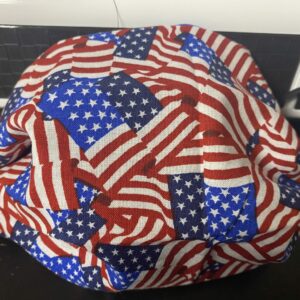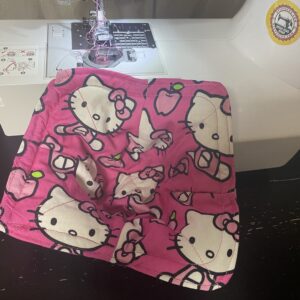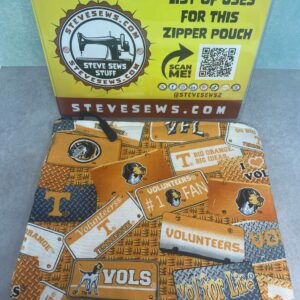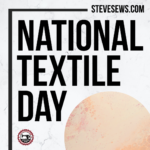Stitching History: The Story Behind Sewing the American Flag – The American flag is an enduring symbol of the United States, representing the ideals of freedom, unity, and patriotism. It is instantly recognizable with its red and white stripes and a field of stars on a blue background. But have you ever wondered about the history of sewing the American flag? In this blog post, we will delve into the fascinating story behind the creation and evolution of the Stars and Stripes.
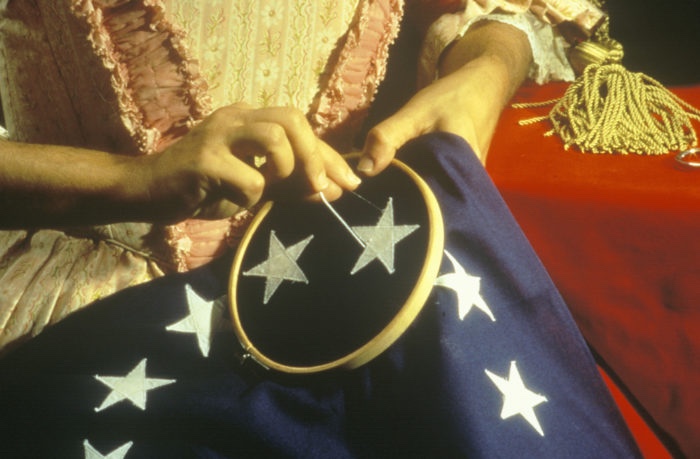
Stitching History: The Story Behind Sewing the American Flag
- The First Flag: The creation of the first American flag is often attributed to Betsy Ross, a seamstress from Philadelphia. According to popular legend, she was approached by George Washington, Robert Morris, and George Ross in 1776 to sew the flag. While the exact details of this encounter are debated, Betsy Ross is recognized as an influential figure in the early history of the American flag.
- The Evolution of the Flag: The American flag has undergone several transformations since its inception. Initially, the flag had 13 stars and 13 alternating red and white stripes, symbolizing the original 13 colonies. However, as new states joined the Union, it became necessary to incorporate additional stars and stripes.
In 1818, Congress passed a resolution that fixed the number of stripes at 13 to honor the original colonies but allowed for the addition of a star for each new state. This decision ensured that the flag would remain visually appealing and not become overcrowded with stripes.
- The Great Flag Debate: The Great Flag Debate of 1958 played a significant role in shaping the flag we recognize today. At the time, there were 48 states in the Union, and Alaska and Hawaii were seeking statehood. A bill was introduced in Congress to add two additional stars to the flag, sparking a heated discussion.
Ultimately, the idea of adding two stars was embraced, but concerns were raised about the potential number of stars growing indefinitely as more states joined. A compromise was reached, and on July 4, 1960, the current design featuring 50 stars in five rows of alternating 6 and 5 stars was officially adopted.
- The Flag Code: The flag is not only a symbol but also a revered national artifact. In 1942, Congress established the U.S. Flag Code, providing guidelines for the proper display and treatment of the flag. While the code does not mandate specific methods for sewing the flag, it emphasizes respect and care in its creation and handling.
Today, flags are often mass-produced using advanced industrial techniques. However, there is still a tradition of handmade American flags crafted by skilled artisans who meticulously sew each star and stripe, ensuring the highest quality and attention to detail.
Flag Day
Flag Day is a commemorative holiday celebrated in various countries around the world to honor and recognize the significance of national flags. The primary purpose of Flag Day is to pay tribute to the flag as a symbol of a nation’s identity, values, and history.
The origins of Flag Day can be traced back to different historical events and cultural traditions in different countries. One of the earliest known instances of Flag Day celebrations dates back to 1885 in the United States. A schoolteacher named Bernard J. Cigrand, inspired by his love for the American flag, encouraged his students to observe June 14th as Flag Birthday, marking the adoption of the U.S. flag on June 14, 1777.
In the United States, Flag Day was officially established by a proclamation issued by President Woodrow Wilson on May 30, 1916. However, it was not until August 3, 1949, that the National Flag Day was established by an Act of Congress. Since then, Flag Day has been observed annually on June 14th, and it serves as an opportunity for Americans to reflect on the symbolism and importance of their national flag.
Flag Day celebrations typically involve various patriotic activities and ceremonies. These may include flag-raising ceremonies, parades, public speeches, and educational programs in schools. People proudly display the national flag at their homes, schools, government buildings, and other public spaces. Many organizations and communities also organize special events to promote flag etiquette, educate the public about flag history, and instill a sense of national pride and unity.
While Flag Day is most widely recognized in the United States, similar observances can be found in other countries as well. For example, in Argentina, Flag Day is celebrated on June 20th, commemorating the death of General Manuel Belgrano, who designed the Argentine flag. In the Philippines, Flag Day is observed on May 28th to honor the national flag, which symbolizes the country’s struggle for independence.
Overall, Flag Day serves as a reminder of the symbolism and significance of national flags, fostering a sense of patriotism and unity among citizens. It is a day to honor the history, values, and ideals represented by the flag, while also recognizing the sacrifices made by those who have fought to defend it.
Conclusion:
The history of sewing the American flag is a testament to the enduring spirit of the United States. From Betsy Ross to modern-day flag makers, the art of flag sewing has evolved alongside the nation itself. The Stars and Stripes represent the unity and resilience of the American people, and the care and craftsmanship put into each flag serve as a reminder of the pride and honor associated with this iconic symbol. Whether flying high on flagpoles or adorning the uniforms of servicemen and women, the American flag continues to inspire and evoke a sense of patriotism in the hearts of millions.
Upcoming Events
This is a list of the upcoming events that Steve Sews will be at. If you know of one in the East Tennessee area, let me know.
None at this time. Check back later.
Meet …
Meet the staff and/or equipment for Steve Sews.
- Brother Stitch (Current Sewing Machine)
- Forge (Circuit)
- Interns
- Lovees (Stuffed Animals)
- Mendi (My Wife’s Sewing Machine)
- Rosie (Antique Sewing Machine)
- Steve (Steve himself)
- The Masked Bandit (Steve’s older Sewing Machine)
- Trainees
- Van the T-Rex (Helper)
- Zee (Face Mask Model)

SUBSCRIBE TODAY!
Don’t miss a single blog post about sewing, quilting, crafts, and recipes! Plus so much more!

Follow on WordPress
Follow Steve Sews Stuff on WordPress.comFollow Steve Sews Stuff on Social Media:
You can also choose to follow Steve Sews Stuff on social media as well. (@SteveSews2)
Below are some examples of blog entries from all blogs that I do. (Courageous Christian Father, Steve Sews Stuff and SteveZ DesignZ).
Recent Feed of All of Steve’s Blogs
Recent Posts on Steve Sews
Below is a list of the most recent blog posts found on Steve Sews for you to check out.
Clipart: Unsplash, Pixabay, Pexels, Openverse, Adobe Express, Adobe Stock, FreePik, MetroCreative, Wonder AI, Algo AI and more. This site uses Amazon Affiliate Ads & Google Ads.


